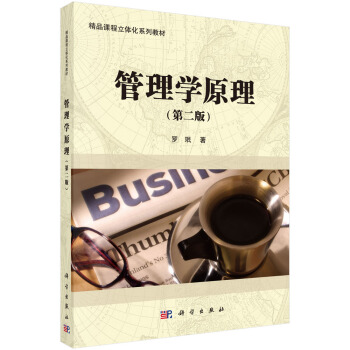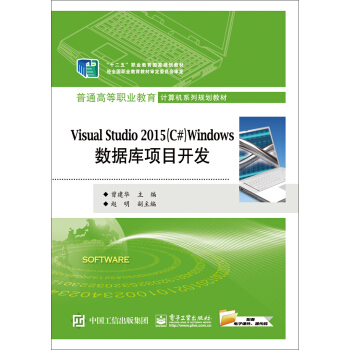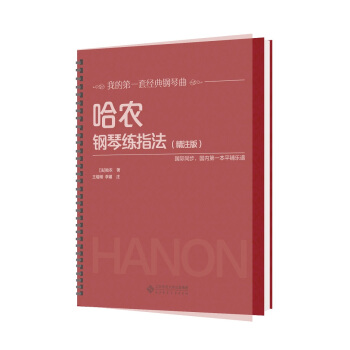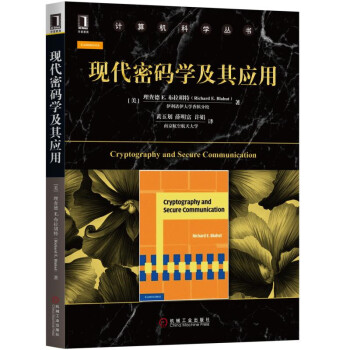![用户界面设计:有效的人机交互策略(第6版 英文版) [Designing the User Interface: Strategies for Effec]](https://pic.windowsfront.com/12218374/59552d92Na9b36a86.jpg)

具体描述
编辑推荐
适读人群 :本书在用户界面设计领域有一定影响,案例丰富,网上配有相关的支持材料,是用户界面设计、人机交互的软件工程方法等人机交互课程的权威教材。它也适合交互系统的用户界面设计人员参考阅读。紧跟人机交互变革的脚步很困难。本书每一版刚出版不久,更新的要求就接踵而至。该领域的扩展促使本书前三版的作者BenShneiderman求助于其长期、重要的研究伙伴CatherinePlaisant,以合著本书的第四版和第五版。此外,MaxineS.Cohen和StevenM.Jacobs对本书的早期版本有长期的教学经验,他们为所有读者和教师提供了提高书的内容质量的新观点。
内容简介
《用户界面设计:有效的人机交互策略(第6版 英文版)》在设计方法中引入了案例研究。重新调整了对社会媒体参与和用户生成内容部分的介绍,尤其是来自移动设备的部分。对《用户界面设计:有效的人机交互策略(第6版 英文版)》的每个章节都进行了大量的校订,修改了所有插图,大幅更新了参考文献。
作者简介
Ben Shneiderman,美国知名专家,长期从事用户界面设计的教学与研究工作,发表论文多篇,出版图书多部,在界面设计领域成果丰硕。
BEN SHNEIDERMAN (http://www.cs.umd.edu/~ben) is a Distinguished University Professor in the Department of Computer Science, Founding Director (1983-2000) of the Human-Computer Interaction Laboratory (http://www .cs.umd.edu/hcil/), and a Member of the UM Institute for Advanced Computer Studies (UMIACS) at the University of Maryland. He is a Fellow of the AAAS, ACM, IEEE, NAI, and SIGCHI Academy and a Member of the National Academy of Engineering, in recognition of his pioneering contributions to human-computer interaction and information visualization.
目录
PART 1 INTRODUCTION 2
CHAPTER 1 Usability of Interactive Systems 4
1.1 Introduction 6
1.2 Usability Goals and Measures 13
1.3 Usability Motivations 15
1.4 Goals for Our Profession 20
CHAPTER 2 Universal Usability 34
2.1 Introduction 36
2.2 Variations in Physical Abilities and Physical Workplaces 37
2.3 Diverse Cognitive and Perceptual Abilities 39
2.4 Personality Differences 40
2.5 Cultural and International Diversity 41
2.6 Users with Disabilities 44
2.7 Older Adult Users 47
2.8 Children 49
2.9 Accommodating Hardware and Software Diversity 52
CHAPTER 3 Guidelines, Principles, and Theories 56
3.1 Introduction 58
3.2 Guidelines 58
3.3 Principles 64
3.4 Theories 80
PART 2 Design PROCESSES 96
CHAPTER 4 Design 98
4.1 Introduction 100
4.2 Organizational Support for Design 102
4.3 The Design Process 105
4.4 Design Frameworks 111
4.5 Design Methods 115
4.6 Design Tools, Practices, and Patterns 123
4.7 Social Impact Analysis 129
4.8 Legal Issues 131
CHAPTER 5 Evaluation and the User Experience 138
5.1 Introduction 140
5.2 Expert Reviews and Heuristics 143
5.3 Usability Testing and Laboratories 147
5.4 Survey Instruments 159
5.5 Acceptance Tests 164
5.6 Evaluation during Active Use and Beyond 165
5.7 Controlled Psychologically Oriented Experiments 171
CHAPTER 6 Design Case Studies 180
6.1 Introduction 182
6.2 Case Study 1: Iterative Design Evaluation of Automated Teller Machines (ATMs) 183
6.3 Case Study 2: Design Consistency at Apple Computer 186
6.4 Case Study 3: Data-Driven Design at Volvo 188
6.5 General Observations and Summary 191
PART 3 INTERACTION STYLES 194
CHAPTER 7 Direct Manipulation and Immersive Environments 196
7.1 Introduction 198
7.2 What Is Direct Manipulation? 199
7.3 Some Examples of Direct Manipulation 206
7.4 2-D and 3-D Interfaces 216
7.5 Teleoperation and Presence 219
7.6 Augmented and Virtual Reality 224
CHAPTER 8 Fluid Navigation 238
8.1 Introduction 240
8.2 Navigation by Selection 242
8.3 Small Displays 255
8.4 Content Organization 258
8.5 Audio Menus 263
8.6 Form Fill-in and Dialog Boxes 264
CHAPTER 9 Expressive Human and Command Languages 276
9.1 Introduction 278
9.2 Speech Recognition 279
9.3 Speech Production 290
9.4 Human Language Technology 291
9.5 Traditional Command Languages 295
CHAPTER 10 Devices 300
10.1 Introduction 302
10.2 Keyboards and Keypads 304
10.3 Pointing Devices 310
10.4 Displays 328
CHAPTER 11 Communication and Collaboration 348
11.1 Introduction 350
11.2 Models of Collaboration 354
11.3 Specific Goals and Contexts 360
11.4 Design Considerations 368
PART 4 DESIGN ISSUES 384
CHAPTER 12 Advancing the User Experience 386
12.1 Introduction 388
12.2 Display Design 389
12.3 View (Window) Management 395
12.4 Animation 401
12.5 Webpage Design 403
12.6 Color 406
12.7 Nonanthropomorphic Design 412
12.8 Error Messages 416
CHAPTER 13 The Timely User Experience 426
13.1 Introduction 428
13.2 Models of System Response Time (SRT) Impacts 430
13.3 Expectations and Attitudes 434
13.4 User Productivity and Variability in SRT 436
13.5 Frustrating Experiences 438
CHAPTER 14 Documentation and User Support (a.k.a. Help) 446
14.1 Introduction 448
14.2 Shaping the Content of the Documentation 449
14.3 Accessing the Documentation 455
14.4 Reading from Displays versus Reading from Paper 460
14.5 Online Tutorials and Animated Demonstrations 465
14.6 Online Communities and Other Avenues for User Support 468
14.7 The Development Process 470
CHAPTER 15 Information Search 476
15.1 Introduction 478
15.2 Five-Stage Search Framework 482
15.3 Dynamic Queries and Faceted Search 492
15.4 Command Languages and “Natural” Language Queries 497
15.5 Multimedia Document Search and Other Specialized Search 498
15.6 The Social Aspects of Search 502
CHAPTER 16 Data Visualization 508
16.1 Introduction 510
16.2 Tasks in Data Visualization 511
16.3 Visualization by Data Type 519
16.4 Challenges for Data Visualization 527
AFTERWORD Societal and Individual Impact of User Interfaces 536
A.1 Future Interfaces and Grand Challenges 538
A.2 Ten Plagues of the Information Age 542
Name Index 549
Subject Index 555
Credits 573
前言/序言
Preface
Designing the User Interface is written for students, researchers, designers, managers, and evaluators of interactive systems. It presents a broad survey of how to develop high-quality user interfaces for interactive systems. Readers with backgrounds in computer science, engineering, information science/studies/systems, business, psychology, sociology, education, and communications should all find fresh and valuable material. Our goals are to encourage greater attention to user experience design issues and to promote further scientific study of human-computer interaction, including the huge topic of social media participation.
Since the publication of the first five editions of this book in 1986, 1992, 1998, 2005, and 2010, HCI practitioners and researchers have grown more numerous and influential. The quality of interfaces has improved greatly, while the community of users and its diversity have grown dramatically. Researchers and designers deserve as much recognition as the Moore’s Law community for bringing the benefits of information and communications technologies to more than 6 billion people. In addition to desktop computers, designers now must accommodate web-based services and a diverse set of mobile devices.
User-interface and experience designers are moving in new directions. Some innovators provoke us with virtual and augmented realities, whereas others offer alluring scenarios for ubiquitous computing, embedded devices, and tangible user interfaces.
These innovations are important, but much work remains to be done to improve the experiences of novice and expert users who still struggle with too many frustrations. These problems must be resolved if we are to achieve the goal of universal usability, enabling all citizens in every country to enjoy the benefits of these new technologies. This book is meant to inspire students, guide designers, and provoke researchers to seek those solutions.
Keeping up with the innovations in human-computer interaction is a demanding task, and requests for an update begin arriving soon after the publication of each edition. The expansion of the field led the single author of the first three editions, Ben Shneiderman, to turn to Catherine Plaisant, a longtime valued research partner, for coauthoring help with the fourth and fifth editions.
In addition, two contributing authors lent their able support to the fifth edition:
Maxine S. Cohen and Steven M. Jacobs have long experience teaching with earlier editions of the book and provided fresh perspectives that improved the quality for all readers and instructors. In preparing for this sixth edition, the team expanded again to include Niklas Elmqvist and Nick Diakopoulos, who are both new colleagues at the University of Maryland. We harvested information from books and journals, searched the World Wide Web, attended conferences, and consulted with colleagues. Then we returned to our keyboards to write, producing first drafts that served as a starting point to generate feedback from each other as well as external colleagues, HCI practitioners, and students. The work that went into the final product was intense but satisfying. We hope you, the readers, will put these ideas to good use and produce more innovations for us to report in future editions.
New in the Sixth Edition
Readers will see the dynamism of human-computer interaction reflected in the substantial changes to this sixth edition. The good news is that most universities now offer courses in this area, and some require it in computer science, information schools, or other disciplines. Courses and degree programs in humancomputer interaction, human-centered computing, user experience design, and others are a growing worldwide phenomenon at every educational level.
Although many usability practitioners must still fight to be heard, corporate and government commitments to usability engineering grow stronger daily.
The business case for usability has been made repeatedly, and dedicated websites describe numerous projects demonstrating strong return on investment for usab
用户评价
读完这本关于用户界面设计的经典之作,我最大的感受是其在理论深度与实践指导之间的绝佳平衡。虽然是第六版,但其中关于“用户研究与评估方法”的论述,依然是当下设计界最前沿、最核心的内容。书中不仅详细介绍了问卷调查、访谈、焦点小组等传统的研究方法,更对观察法、卡片分类法、眼动追踪等更具技术性和深度的评估方式进行了详尽的解释。我特别欣赏作者对于“用户中心设计”理念的强调,他反复提及,设计的最终目的是服务于用户,而不是满足设计师的个人喜好。在描述卡片分类法时,作者列举了一个电商网站信息架构优化的案例,通过让真实用户对产品进行分类,发掘出用户对商品分类的认知逻辑,从而重新组织网站导航,极大地提升了用户查找商品的效率。这种以数据为驱动,以用户为中心的决策过程,正是优秀设计不可或缺的一部分。此外,书中关于“可用性测试”的章节,更是详细到每一个步骤,从测试目的的设定,到招募被测用户的技巧,再到测试过程的记录和分析,可谓面面俱到,让初学者也能按部就班地开展有效的可用性测试。它不只是理论的堆砌,更是实操指南,帮助我们走出“闭门造车”的困境,真正将用户置于设计的中心。
评分这本书的第六版,虽然封面和部分案例可能有所更新,但其核心的“交互设计模式”的讲解,依然是我学习和工作中的宝贵财富。作者对各种常见的交互模式进行了系统性的梳理和分析,从简单的按钮、链接,到复杂的表单、拖放操作,再到更高级的滑动菜单、模态窗口等,都进行了详尽的介绍。我尤其喜欢书中对“反馈机制”的强调。作者认为,每一次用户操作都应该得到系统清晰、及时的反馈,这不仅能够告知用户操作是否成功,还能帮助用户了解系统的状态,并建立信任感。他用很多生动的例子说明,一个微妙的按钮按下效果,或者一个微妙的加载提示,都能在无形中提升用户的满意度。更让我受益匪浅的是,书中不仅罗列了各种设计模式,还深入探讨了它们背后的用户心理学原理。例如,在介绍“错误预防”模式时,作者解释了人类认知偏差,以及如何通过设计来避免用户犯错,比如在删除操作前进行确认提示,或者在填写表单时提供实时校验。这种从“为什么”到“怎么做”的深入解析,让我不仅仅是学会了“用”,更是学会了“思考”。这本书让我意识到,好的交互设计,绝非简单的元素堆砌,而是对用户行为和心理的深刻洞察与巧妙引导。
评分不得不说,这本《用户界面设计》第六版在“信息架构”这一核心概念的阐述上,达到了一个新的高度。作者并没有将信息架构仅仅视为一种技术性的组织方式,而是将其提升到了战略层面,强调其对用户体验和商业目标的双重影响。书中对“导航设计”的深入剖析,让我对如何构建清晰、一致且易于理解的导航系统有了全新的认识。我印象深刻的是,作者将网站导航比作用户在数字迷宫中的指引,强调了“位置知觉”和“路径知觉”的重要性。他详细阐述了不同类型的导航模式,如全局导航、局部导航、上下文导航等,并结合大量优秀和糟糕的案例,分析了它们的优缺点以及适用场景。例如,在讨论面包屑导航时,书中细致地讲解了它如何帮助用户理解自己在网站中的位置,并快速返回上一级页面。而另一边,作者也警示了过度设计和信息过载可能带来的用户迷失感。更令我惊喜的是,书中还探讨了信息架构与情感设计之间的联系,指出良好的信息架构能够减少用户的认知负荷,从而提升用户的情感体验。这种跨越式的思考,让我看到信息架构不仅仅是“摆放”内容,更是“引导”用户,甚至“影响”用户情绪的关键。
评分作为一名在用户体验领域摸爬滚打多年的从业者,每次重读这本《用户界面设计:有效的人机交互策略》(第六版),总能发现新的惊喜。这一次,我将目光聚焦在书中关于“视觉设计原则与实践”的章节。虽然我们常说“内容为王”,但不可否认,一个赏心悦目的视觉界面能够极大地吸引用户的注意力,并传递品牌价值。作者并没有止步于讲解色彩、排版、图标等基础元素,而是深入剖析了“形式追随功能”这一核心理念在视觉设计中的体现。书中关于“一致性”的论述尤其令我印象深刻,他强调了跨平台、跨应用保持视觉风格一致性的重要性,以及这种一致性如何帮助用户建立心理预期,降低学习成本。他用大量的图例展示了如何在不同尺寸的屏幕上,通过响应式设计,既保持品牌的统一性,又兼顾不同设备的交互特性。此外,书中还触及了“动态视觉元素”的设计,比如动画和过渡效果,作者指出,恰当的动画不仅能够引导用户的注意力,还能提供反馈,增强交互的愉悦感。但同时,他也严厉警告了过度使用动画可能造成的干扰和性能问题。这种对细节的极致追求,以及对理论与实践的深刻洞察,让我更加确信,优秀的视觉设计是用户体验不可分割的一部分。
评分一本优秀的教材,即使是通识性内容的第六版,也总能从中挖掘出新的闪光点。这次重温,我尤其被书中关于“可用性启发式评估”的章节深深吸引。作者并没有简单地罗列那九大启发式原则,而是通过大量真实的案例研究,生动地展示了如何在实际产品开发中应用这些原则进行快速而高效的评估。我印象最深的是关于“帮助用户识别、诊断和从错误中恢复”这一原则的论述。书中详细剖析了一个支付失败的场景,从用户界面上的错误提示信息模糊不清,到缺乏明确的操作指引,再到用户在尝试解决问题时陷入的困境,层层剥茧,直观地揭示了糟糕的错误处理设计是如何让用户产生挫败感,甚至放弃使用产品的。更重要的是,作者随后给出了改进的建议,从设计更清晰、更具建设性的错误消息,到提供可操作的解决方案,再到考虑用户的心理状态,这些细致入微的设计思考,让我受益匪浅。此外,书中还穿插了许多不同领域的产品案例,从桌面应用到移动App,再到新兴的智能设备,展现了启发式评估的普适性。这不仅仅是一份原则列表,而是一套解决实际设计问题的实用工具箱,对于想要提升产品可用性的设计师、产品经理,甚至是开发者来说,都具有极高的参考价值。通过阅读,我深刻体会到,细节决定成败,而每一个细节的背后,都蕴含着对用户体验的深切关怀。
相关图书
本站所有内容均为互联网搜索引擎提供的公开搜索信息,本站不存储任何数据与内容,任何内容与数据均与本站无关,如有需要请联系相关搜索引擎包括但不限于百度,google,bing,sogou 等,本站所有链接都为正版商品购买链接。
© 2025 windowsfront.com All Rights Reserved. 静流书站 版权所有




















